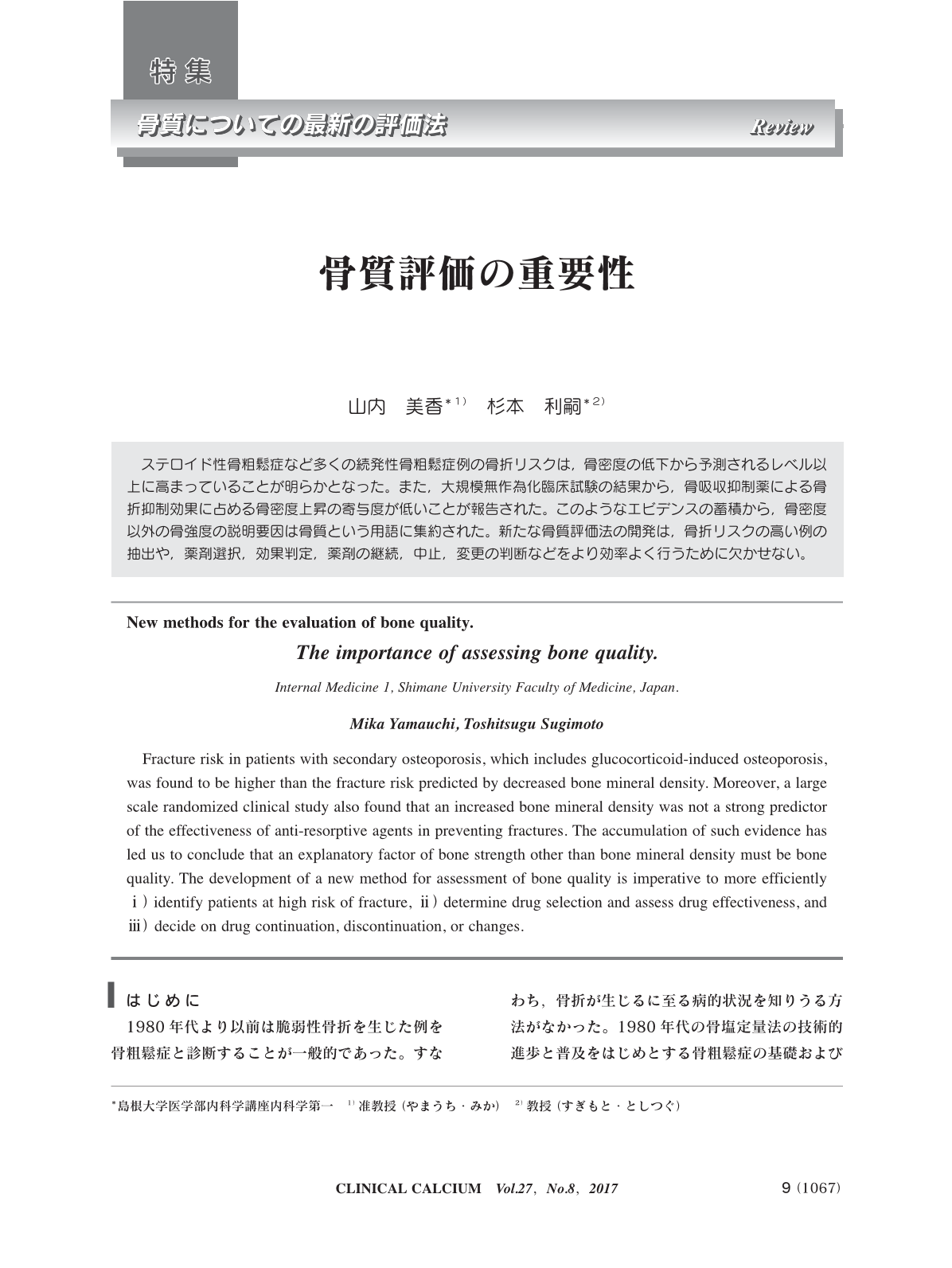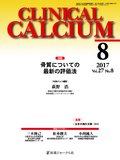Japanese
English
- 有料閲覧
- Abstract 文献概要
- 1ページ目 Look Inside
- 参考文献 Reference
ステロイド性骨粗鬆症など多くの続発性骨粗鬆症例の骨折リスクは,骨密度の低下から予測されるレベル以上に高まっていることが明らかとなった。また,大規模無作為化臨床試験の結果から,骨吸収抑制薬による骨折抑制効果に占める骨密度上昇の寄与度が低いことが報告された。このようなエビデンスの蓄積から,骨密度以外の骨強度の説明要因は骨質という用語に集約された。新たな骨質評価法の開発は,骨折リスクの高い例の抽出や,薬剤選択,効果判定,薬剤の継続,中止,変更の判断などをより効率よく行うために欠かせない。
Fracture risk in patients with secondary osteoporosis, which includes glucocorticoid-induced osteoporosis, was found to be higher than the fracture risk predicted by decreased bone mineral density. Moreover, a large scale randomized clinical study also found that an increased bone mineral density was not a strong predictor of the effectiveness of anti-resorptive agents in preventing fractures. The accumulation of such evidence has led us to conclude that an explanatory factor of bone strength other than bone mineral density must be bone quality. The development of a new method for assessment of bone quality is imperative to more efficiently ⅰ)identify patients at high risk of fracture, ⅱ)determine drug selection and assess drug effectiveness, and ⅲ)decide on drug continuation, discontinuation, or changes.



